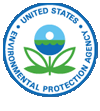 Statement of Lisa P. Jackson Administrator,
Statement of Lisa P. Jackson Administrator,
Testimony on Federal Response to the Recent Oil Spill in the
Senate Committee on Environment & Public Works
Let me begin by recognizing the extraordinary effort put in by our responders. These are people that have maintained their resolve in the face of often overwhelming challenges. They have gone above and beyond and we certainly owe them a debt of gratitude. In the last three weeks, EPA has dispatched more than 120 staff scientists, engineers, and contractors to
At the president's direction I have personally traveled to the region - the region I grew up in and still consider home - twice over the past weeks, to personally oversee EPA's efforts and to meet with the local community to ensure their questions and concerns are addressed.
For weeks, EPA responders have been monitoring air pollutants including, particulate matter, hydrogen sulfide, and total volatile organic compounds - or VOCs - from the oil in the Gulf, as well as the controlled burning of oil. These pollutants could pose a health risk to local communities and this monitoring is essential to ensure that communities are protected as BP takes direct response actions. EPA is also monitoring water quality by conducting surface water testing along the
A primary concern is to ensure the safe application of chemical dispersants. Oil spill dispersants are chemicals applied to the spilled oil to break down the oil into small drops below on the surface. The dispersed oil mixes into the water column and is rapidly diluted. Bacteria and other microscopic organisms then act to degrade the oil within the droplets. However, in the use of dispersants we are faced with environmental trade-offs. We know that surface use of dispersants decreases the environmental risks to shorelines and organisms at the surface. And we know that dispersants breakdown over weeks rather than remaining for several years as untreated oil might. But, we are also deeply concerned about the things we don't know. The long term effects on aquatic life are still unknown and we must make sure that the dispersants that are used are as non-toxic as possible. We are working with manufacturers, with BP and with others, to get less toxic dispersants to the response site as quickly as possible.
EPA has previously authorized use of several dispersing chemicals under the National Contingency Plan. In order to be placed on this list, each dispersing chemical must undergo a toxicity and effectiveness test. On Friday, EPA and the On Scene Coordinator authorized the application of dispersant underwater, at the source of the leak. The goal of this novel approach is to break up and degrade the oil before it reaches the water's surface, and comes closer to our shorelines, our estuaries and our nurseries. Based on our testing, this can be done by using less dispersant than is necessary on the surface. But let me be clear that EPA reserves the right to halt the usage of sub-surface dispersant if we conclude that at any time; the impact to the environment outweighs the benefit of dispersing oil. As with our other monitoring initiatives, EPA and the Coast Guard have instituted a publicly available monitoring plan for sub-surface dispersant application to understand the impacts to the environment. This data will come to EPA once a day and if the levels in the samples are elevated, EPA will re-consider the authorization of use of dispersants.
EPA is also preparing to support any necessary shoreline assessment and cleanup. This could include identifying and prioritizing sensitive resources and recommending cleanup methods. EPA, in coordination with the States, will continue to provide information to both workers and the public about test results, as well as assisting communities with potential debris disposal and hazardous waste issues.
Madam Chairman, as a
EPA will continue to fully support to the U.S. Coast Guard and play a robust role in monitoring and responding to potential public health and environmental concerns. As local communities assess the impact on their economies, EPA, in partnership with other federal, state, and local agencies, will provide all assets to assist in the recovery. At this time I welcome any questions you may have.
